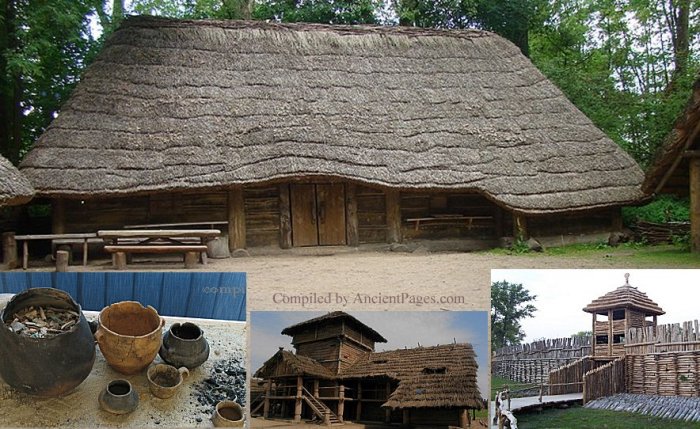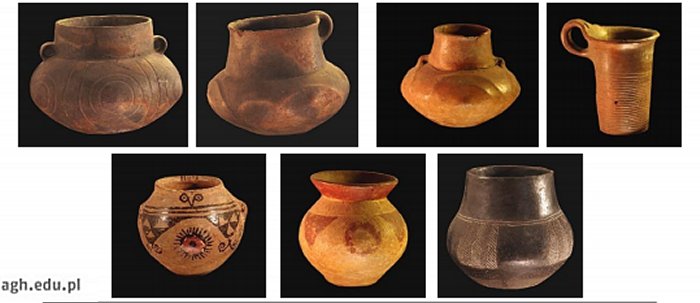Lusatian Culture: Ancient Traders Of Central Europe Built Strongly Fortified Settlements To Withstand Scythian Attacks
A. Sutherland - AncientPages.com - Lusatian culture dates back to the Bronze Age and the Early Iron Age (14th-4th century BC), occupying the broadest range of central Europe.
This culture covered almost the entire territory of the Polish lands, central and northwestern Slovakia and Moravia, northern and northeastern Bohemia, Saxony, Lusatia, eastern Thuringia, and eastern Brandenburg in central-eastern Germany, east Pomerania. It reached the western part of Volhynia (a historical region of northwestern Ukraine).
In the Bronze Age, the central European Lusatian (Lausitz) culture expanded around 1200 BC and persisted in the first centuries of the Early Iron Age.
Economy Of Lusatian People
The Lusatian economy varied depending on the area. The people were occupied with cultivation and animal husbandry (cattle, pigs, sheep, goats, horses, dogs).
Plants primarily cultivated by the then-population were mainly wheat, barley, millet, rye, legumes, and oilseeds.
Lusatian Spiral disc brooches Wicina. (Wikimedia Commons) - Image credit: filmArchive - CC BY 3.0 DEED
Other productive plants to grow included beans, peas, lentils, flax, and poppy. Additionally, traces of domesticated pears, plums, and apples were found. Among soil cultivation tools were horn diggers, hoes made of animal antler fragments, seedlings, and wood-made trowels.
The household included bone, wood, clay, antler, flint, stone, ceramic, weaving, fiber processing, and later bronze foundry; the beginnings of iron processing are distinguished, as well as pottery, weaving, bone and horn processing, and carpentry.
The Lusatians developed communication (two- and four-wheeled carts and boats) and trade that played an important role: all metallurgical manufacturing was probably based on the imported raw material.
Amber And Metal Trade Despite Danger From Scythian Attacks
The period of Scythian expansion from the Black Sea area into central Europe dates back to c.800 BC - 600 BC; however, between 500 BC-350 BC, many Scythian incursions took place in the northern part of central Europe. These attacks ceased in the fourth century BC.
Despite the danger, the amber trade still flourished, and the Lusatians continued to be successful mediators between the amber gatherers and the Hallstatt culture (1200 BC – 500 BC) in the eastern Alpine area and the Etruscans in Italy at the beginning of the seventh century.
Innovations such as bronze horse-gear comprising bridle-bits, cheek-pieces, ornamental plates, and the first iron objects spread to the Baltic area by the Lusatians. Metal finds from the seventh and sixth centuries BC revealed in Pomerania, East Prussia, and western Lithuania attest to continuing contacts with the Lusatians in central Europe and the Germanic peoples.
Lusatian Settlements And Burial Tradition
The Lusatians built different settlements, including extensive, long-lasting open settlements and small seasonal settlements, in the central and western areas of the nearby town.
Known settlements include the stronghold at Biskupin in Poland and Buch near Berlin, Germany. They had open villages and fortified settlements (burg wall or grod) located in marshy areas or on hilltops. The ramparts were constructed of wooden boxes filled with soil or stones.
The Urnfield culture (c. 1300 BC – 750 BC) was central Europe's late Bronze Age culture. The Lusatians highly respected the Urnfield tradition (c 1300 BC – 750 BC), according to which the dead were cremated; their remains were placed in urns and put into the burial pit together with dishes in which food and drinks were offered to the deceased.
Archaeological excavations of the graves revealed garment decorations such as clasps, pins, bracelets, etc., made mainly of bronze and other everyday items. The culture buried the deceased in flat, extensive cemeteries, and the cremation burials were often accompanied by numerous secondary pottery vessels and bronze tools, weapons, and ornaments.
Lusatian cemeteries reveal significant variations regarding the number of graves. The smallest cemetery contained only two graves, the largest over eighteen hundred. But the majority ranged from scores of tombs to several hundred.
Mount Sleza, in southern Poland, was a well-known Lusatian cult center. During the Neolithic Period and at least as far back as the 7th century BC, Mount Sleza was a holy place highly revered by the Lusatian people.
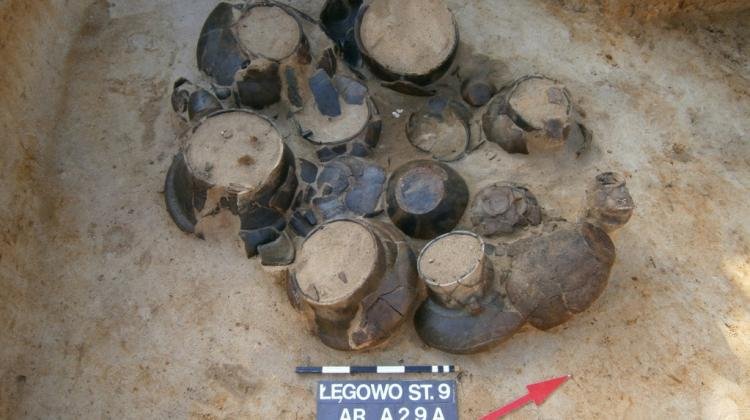 The cemetery of the Lusatian culture community from the end of the Bronze Age and the Early Iron Age. (Remains from over 2,500 years ago, unearthed during excavations in Legów near Wagrowiec (Greater Poland Voivodeship). Image credit: naukawpolsce.pap.pl
The cemetery of the Lusatian culture community from the end of the Bronze Age and the Early Iron Age. (Remains from over 2,500 years ago, unearthed during excavations in Legów near Wagrowiec (Greater Poland Voivodeship). Image credit: naukawpolsce.pap.pl
"The ossuary was covered with an inverted dish and frequently put into another bigger pot along with accessory vases. In the better-preserved and well-excavated Lusatian cemeteries, low barrows were found above the graves, some less than 1 meter, some reaching up to 1.5 m, but usually of the same height as the pile of stone, which covered the grave in the middle of the barrow. The barrow was encircled by a ring of rocks built in several rows; on top of the barrow stood a tall, pointed tombstone.
Such classical Lusatian barrows have been discovered in Saxony. In other cemeteries, cairns were found above the graves, but the low earthen barrows must have disappeared over the intervening eras…" 1
Pottery, Weapons, And Jewelry Of Lusatians
Various forms and tumor ornaments characterize the ceramics of the Lusatian culture.
The pottery was also very well burned out. Later, many decorations appeared with painted geometric motifs, usually yellow, brown, or red.
See also: More About History
Clay pots and hand-glued objects were unearthed in large quantities and many forms. In the oldest phase, the Lusatian vessels were decorated with extruded tumors, later two-conical, sharply profiled, and in the early Iron Age amphoras appeared with a bloated belly, narrowing neck, and most often decorated with engravings (also zoo- and anthropomorphic), occasionally with narrative scenes. Metal objects (axes, sickles, knives), weapons (swords, daggers, spearheads, and arrows), and decorations (necklaces, bracelets, earrings) produced by this ancient culture (or imported) systematically change over time.
The Collapse Of Lusatian Culture
Many Scythian arrowheads have been found in Lusatian strongholds, indicating that the eastern aggressors continuously attacked the settlements. The Lusatian strongholds were now in their last stages of survival. Eventually, the culture was devastated and collapsed due to Scythian invasions and the Germanic expansion
Written by – A. Sutherland - AncientPages.com Senior Staff Writer
Updated on January 20, 2024
Copyright © AncientPages.com All rights reserved. This material may not be published, broadcast, rewritten or redistributed in whole or part without the express written permission of AncientPages.com
Expand for referencesReferences:
Malinowski, Tadeusz. "FUNERAL CUSTOMS OF THE BRONZE AND IRON AGES IN POLAND." Archaeology, 16, no. 3 (1963): 183-86.
- Marija Gimbutas, Bronze Age cultures in Central and Eastern Europe
More From Ancient Pages
-
 Evidence Of Frightening Rituals Practiced By Ancient Steppe Nomads In Siberia – Discovered
Archaeology | Sep 19, 2020
Evidence Of Frightening Rituals Practiced By Ancient Steppe Nomads In Siberia – Discovered
Archaeology | Sep 19, 2020 -
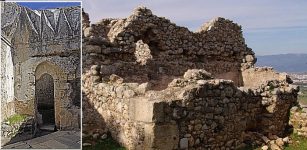 7th Century Old Cistern Among Recent Finds In Medieval City Of Beçin, Turkey
Archaeology | Aug 21, 2020
7th Century Old Cistern Among Recent Finds In Medieval City Of Beçin, Turkey
Archaeology | Aug 21, 2020 -
 Medieval Music Wasn’t Only Supposed To Be Beautiful To Listen To – A New Study Suggests
Archaeology | Jun 8, 2023
Medieval Music Wasn’t Only Supposed To Be Beautiful To Listen To – A New Study Suggests
Archaeology | Jun 8, 2023 -
 Stone Tools Reflect Three Waves Of Migration Of The Earliest Homo Sapiens Into Europe
Archaeology | May 4, 2023
Stone Tools Reflect Three Waves Of Migration Of The Earliest Homo Sapiens Into Europe
Archaeology | May 4, 2023 -
 Orang Bunian: Mysterious Invisible Whistle People Living In Forests In Malay Folklore
Featured Stories | Jul 15, 2016
Orang Bunian: Mysterious Invisible Whistle People Living In Forests In Malay Folklore
Featured Stories | Jul 15, 2016 -
 The Egyptian Dream Book Reveals Ancient Predictions Of The Future
Egyptian Mythology | Jun 6, 2020
The Egyptian Dream Book Reveals Ancient Predictions Of The Future
Egyptian Mythology | Jun 6, 2020 -
 Unravelling The Mystery Of The Ulfberht Sword – An Ancient Viking Artifact Far Ahead Of Its Time
Artifacts | Feb 11, 2014
Unravelling The Mystery Of The Ulfberht Sword – An Ancient Viking Artifact Far Ahead Of Its Time
Artifacts | Feb 11, 2014 -
 Mysterious Kola Pyramids Built By An Unknown Lost Ancient Civilization Can Rewrite Ancient History
Civilizations | Aug 3, 2020
Mysterious Kola Pyramids Built By An Unknown Lost Ancient Civilization Can Rewrite Ancient History
Civilizations | Aug 3, 2020 -
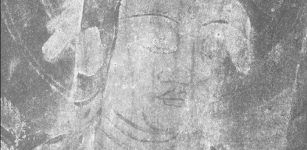 1,300-Year-Old Paintings Depicting Eight Buddhist Saints Revealed By Infrared Cameras
News | Oct 1, 2020
1,300-Year-Old Paintings Depicting Eight Buddhist Saints Revealed By Infrared Cameras
News | Oct 1, 2020 -
 Svantevit – Four-Headed War God Of The Slavic Peoples Of Central Europe
Featured Stories | Sep 13, 2015
Svantevit – Four-Headed War God Of The Slavic Peoples Of Central Europe
Featured Stories | Sep 13, 2015 -
 On This Day In History: First Recorded Passage Of Halley’s Comet Observed By Chinese Astronomers – On Mar 30, 240 BC
News | Mar 30, 2016
On This Day In History: First Recorded Passage Of Halley’s Comet Observed By Chinese Astronomers – On Mar 30, 240 BC
News | Mar 30, 2016 -
 Excavations Reveal Massive Building And Invaluable Ceramics In Ancient City Of Poseidonia
Archaeology | Apr 10, 2017
Excavations Reveal Massive Building And Invaluable Ceramics In Ancient City Of Poseidonia
Archaeology | Apr 10, 2017 -
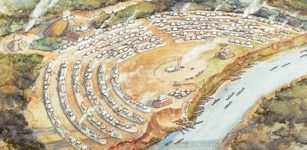 Is The Poverty Point Octagon World’s Largest Ancient Solstice Marker?
Featured Stories | May 21, 2017
Is The Poverty Point Octagon World’s Largest Ancient Solstice Marker?
Featured Stories | May 21, 2017 -
 4,000-Year-Old Village Mentioned In Ancient Texts Unearthed Near Sacred City Of Varanasi
Archaeology | Mar 13, 2020
4,000-Year-Old Village Mentioned In Ancient Texts Unearthed Near Sacred City Of Varanasi
Archaeology | Mar 13, 2020 -
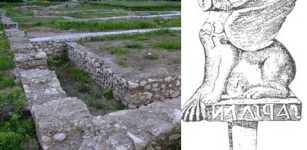 Mysterious Inscription On Naxian-Style Sphinx From Dacia Deciphered
Archaeology | Jan 15, 2024
Mysterious Inscription On Naxian-Style Sphinx From Dacia Deciphered
Archaeology | Jan 15, 2024 -
 Unraveling the mystery of the Rhynie Man
News | Aug 24, 2015
Unraveling the mystery of the Rhynie Man
News | Aug 24, 2015 -
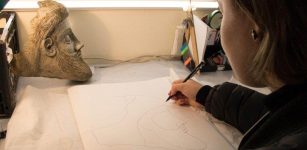 Fragment Of Unique Ancient Greek Terracotta Statue Uncovered In Underwater Diggings
Archaeology | Mar 26, 2017
Fragment Of Unique Ancient Greek Terracotta Statue Uncovered In Underwater Diggings
Archaeology | Mar 26, 2017 -
 Siege Of Alesia: Last Decisive Battle That Ended Gallic Independence In France And Belgium
Featured Stories | Feb 1, 2017
Siege Of Alesia: Last Decisive Battle That Ended Gallic Independence In France And Belgium
Featured Stories | Feb 1, 2017 -
 On This Day In History: Albertus Magnus – Medieval Person Of Great Historical Importance Died – On Nov 15, 1280
News | Nov 15, 2016
On This Day In History: Albertus Magnus – Medieval Person Of Great Historical Importance Died – On Nov 15, 1280
News | Nov 15, 2016 -
 Story Of Atahualpa: The Last Emperor Of The Inca Empire
Featured Stories | Feb 4, 2016
Story Of Atahualpa: The Last Emperor Of The Inca Empire
Featured Stories | Feb 4, 2016

